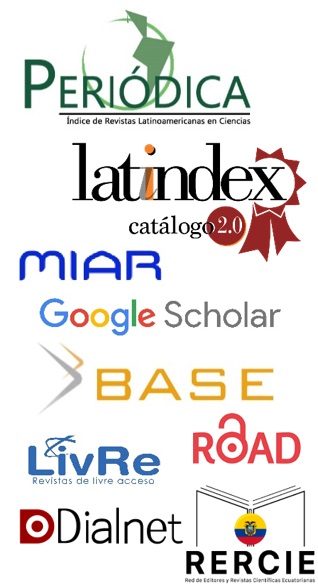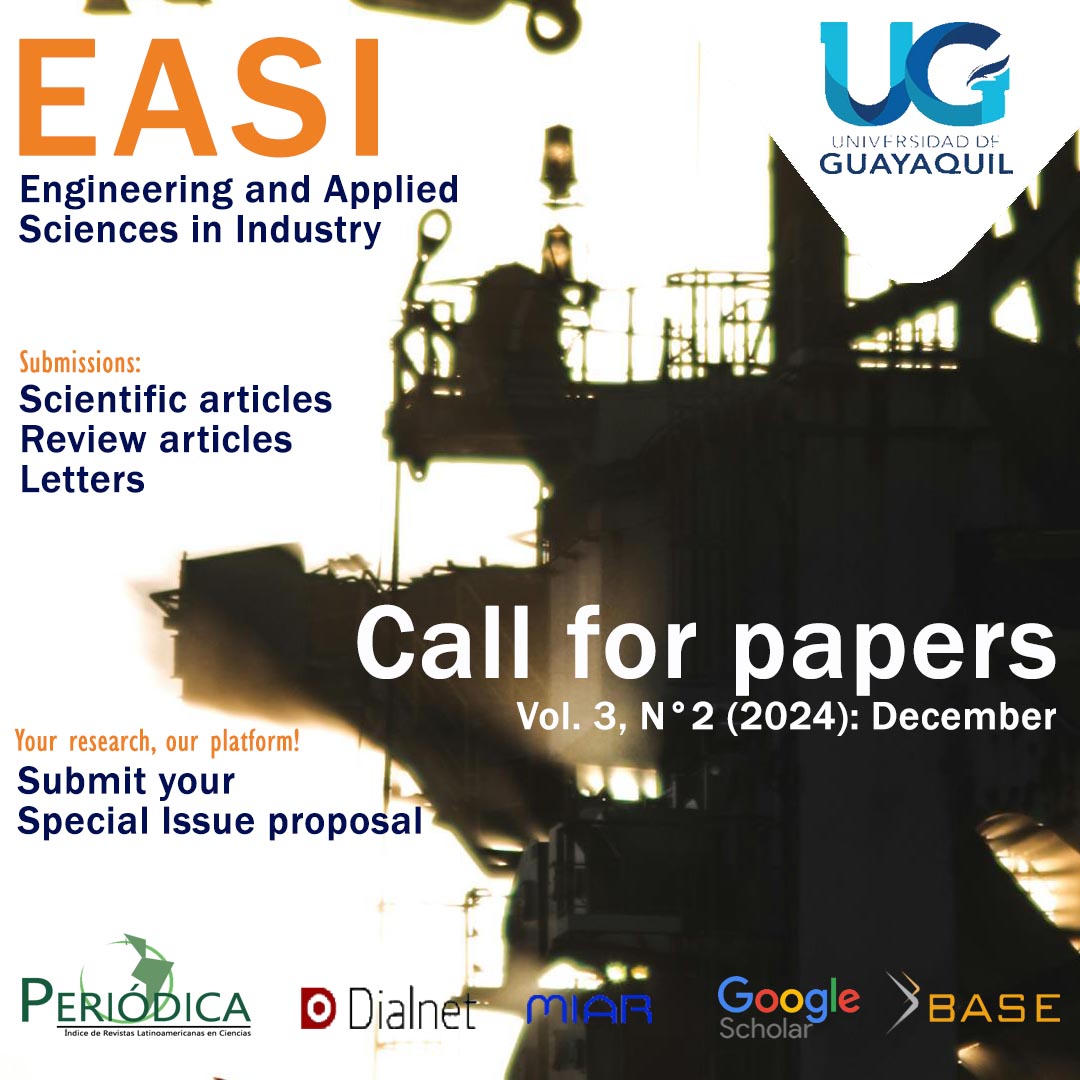Influence of the model view controller (MVC) pattern on the security, interoperability and usability of a computer-system’s life cycle.
DOI:
https://doi.org/10.53591/easi.v2i1.2043Keywords:
Architecture, Design, Pattern, Security, Interoperability, UsabilityAbstract
Applying a design pattern during software development is a common strategy among programmers. In the broad classification of design patterns created to date, there are architectural patterns, one of the most widely used being the Model-View-Controller pattern, also known as MVC. The wide adoption of this pattern has made it necessary to evaluate its impact on security, interoperability and usability throughout the life cycle of a computer system. Through a literature review and research on specialized software development websites, this study reveals that the MVC pattern has a positive influence on these aspects. Furthermore, it was found that the use of this architectural design pattern is considered indispensable and widely popular by the community of experienced developers.
References
Al-Hawari, F. (2022). Software design patterns for data management features in web-based information systems. Journal of King Saud University - Computer and Information Sciences, 34(10). https://doi.org/10.1016/j.jksuci.2022.10.003.
Basc, E. (2017). El patrón de diseño Modelo-Vista-Controlador (MVC) y su implementación en Java Swing. Acta Nova, 2(Mvc), 493–507. https://hdl.handle.net/11042/2743.
DigitalOcean. (2019). Angular MVC - A Primer. https://www.digitalocean.com/community/tutorials/angular-angular-mvc-primer.
Espitia, N., Armao, O., & Carbajo, J. (2018). República Bolivariana de Venezuela.
Foundation, D. S. (2017). FAQ: General. Django Appears to Be a MVC Framework, but You Call the Controller the “View”, and the View the “Template”. How Come You Don’t Use the Standard Names? https://docs.djangoproject.com/en/4.1/faq/general/#django-appears-to-be-amvc-framework-but-you-call-the-controller-the-view-and-the-view-thetemplate-how-come-you-don-t-use-the-standard-names.
Guerrero, C. A., Suárez, J. M., & Gutiérrez, L. E. (2013). Patrones de diseño GOF (the gang of four) en el contexto de procesos de desarrollo de aplicaciones orientadas a la web. Informacion Tecnologica, 24(3). https://doi.org/10.4067/S0718-07642013000300012.
Holzinger, A., Struggl, K. H., & Debevc, M. (2017). Applying Model-View-Controller (MVC) in design and development of information systems: An example of smart assistive script breakdown in an e-Business application. In Proceedings of the International Conference on e-Business (ICE-B 2010), 63–68. https://doi.org/10.5220/0002980900630068.
Kaluža, M., Kalanj, M., & Vukelić, B. (2019). A comparison of back-end frameworks for web application development. Zbornik Veleučilišta u Rijeci, 7(1), 317–332. https://doi.org/10.31784/zvr.7.1.10.
Liu, C., & Wang, K. (2012). An online examination system based on UML modeling and MVC design pattern. In Proceedings - 2012 International Conference on Control Engineering and Communication Technology, ICCECT 2012, 815–817. https://doi.org/10.1109/ICCECT.2012.189.
Lopez, D., & Edgar, M. (2017). Arquitectura de Software basada en Microservicios para Desarrollo. Séptima Conferencia de Directores de Tecnología de Información, TICAL 2017 Gestión de Las TICs Para La Investigación y La Colaboración, San José, Del XX al XX de Julio de 2017, 5–7.
Ollsson, T., Toll, D., Wingkvist, A., & Ericsson, M. (2019). Evolution and Evaluation of the Model-View-Controller Architecture in Games. Proceedings - 4th International Workshop on Games and Software Engineering, GAS 2015, 8–14. https://doi.org/10.1109/GAS.2015.10.
Petrasch, R. (2019). Transformation of state machines for a microservice-based event-driven architecture: A proof-of-concept. Advances in Intelligent Systems and Computing, 769, 327–336. https://doi.org/10.1007/978-3-319-93692-5_32.
Räihä, O. (2010). A survey on search-based software design. Computer Science Review, 4(4), 203–249. https://doi.org/10.1016/J.COSREV.2010.06.001.
Räihä, O. (2018). A survey on search-based software design. Computer Science Review, 4(4), 203–249. https://doi.org/10.1016/j.cosrev.2010.06.001.
Spring, (2022). Spring MVC Tutorial. https://www.baeldung.com/spring-mvc-tutorial
Stack Overflow. (2022). Stack Overflow Developer Survey Result. Stack Overflow. https://survey.stackoverflow.co/2022/#technology-most-popular-technologies.
Yair, P., & Sánchez, C. (2020). Implementación del patrón arquitectónico MVC en aplicaciones web para la arquitectura del software del sistema de capellanía de la UM. Anuario2020, 1(1), 112–120.
Yau, S. S., & Tsai, J. J. P. (2018). A Survey of Software Design Techniques. IEEE Transactions on Software Engineering, SE-12(6), 713–721. https://doi.org/10.1109/TSE.1986.6312969.
Yunanto, A. A., Hardiansyah, F. F., Putra, A. A. A., Rasyid, M. B. A., & Arifiani, S. (2021). Development of sandbox components with microservices architecture and design patterns in games. Procedia Computer Science, 197, 354–361. https://doi.org/10.1016/j.procs.2021.12.150.
Zhang, C., Wang, F., Xu, R., Li, X., & Yang, Y. (2018). A quantitative analysis of survey data for software design patterns. ACM International Conference Proceeding Series, 48–55. https://doi.org/10.1145/2627508.2627516.
Published
How to Cite
Issue
Section
License
Copyright (c) 2023 Franklin Enríquez, Santiago Fierro , Brandon Flores, Daisy Imbaquingo Esparza, Jaime Michelena

This work is licensed under a Creative Commons Attribution-NonCommercial-NoDerivatives 4.0 International License.
Contributions published in the EASI journal follow the open access license CC BY-NC-ND 4.0 (Creative Commons Attribution-NonCommercial-NoDerivs 4.0). This license empowers you as an author and ensures wide dissemination of your research while still protecting your rights.
For authors:
- Authors retain copyrights without restrictions according to CC BY-NC-ND 4.0 license.
- The journal obtains a license to publish the first original manuscript.
For readers/users:
Free access and distribution: Anyone can access, download, copy, print, and share the published article freely according to the license CC BY-NC-ND 4.0 terms.
Attribution required: If any third party use the published material, they must give credit to the creator by providing the name, article title, and journal name, ensuring the intellectual property of the author(s), and helping to build the scholarly reputation.
Non-commercial use: only noncommercial use of the published work is permitted. Noncommercial means not primarily intended for or directed towards commercial advantage or monetary compensation by any third party.
No modifications allowed: The content of the published article cannot be changed, remixed, or rebuilt upon the author’s work. This ensures the integrity and accuracy of the research findings.



